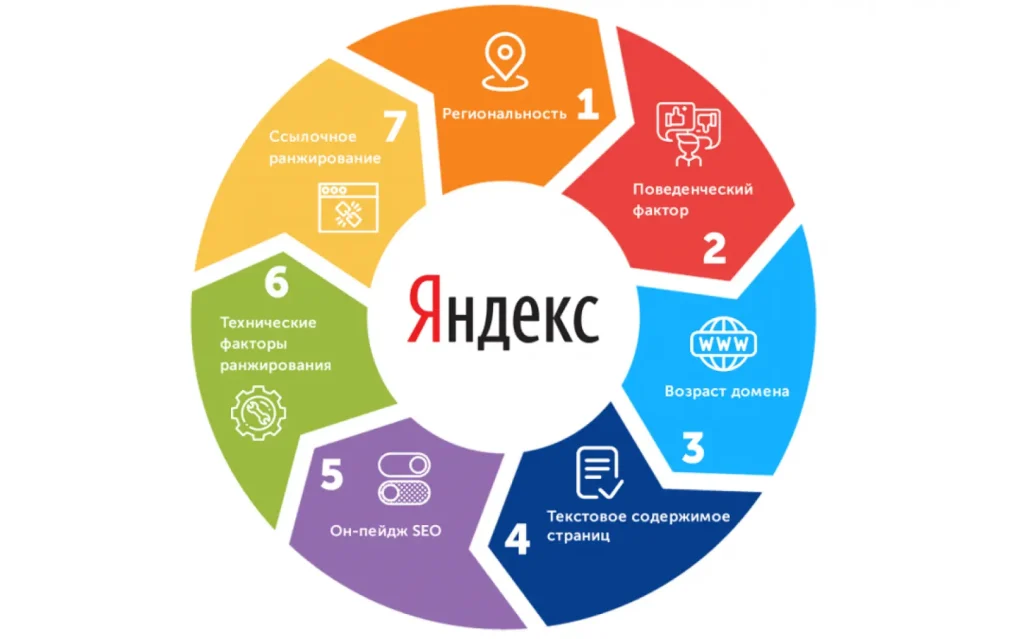SEO stands for Search Engine Optimization, literally translated from English. In other words, SEO is the optimization of a website to improve its ranking in search engines.
There may be many search engines, but the most popular are Google and Yandex, and there is also Bing, a search engine developed by Microsoft.
Yandex is primarily aimed at a Russian audience, Google and Bing are aimed at the entire world, but Google still has the upper hand.
Google is quite popular in the CIS countries, so optimization is often carried out taking into account the requirements of this search engine (SE). Yandex also has its own requirements, which are followed. However, it's important to understand that the choice of website promotion in a particular SE depends on the analytical data obtained. For example, Yandex.Metrica showed that clicks on a certain keyword from Yandex are higher than from Google. We do the same with Google Analytics and compare the data. If analytics show very few clicks from Google to the site, then Yandex can be used as a benchmark. The example above is an individual one. Don't rely on it. You should focus on the data analytics. Based on the analytics, you can begin developing a promotion strategy.
Website promotion strategy
Why does a website need a strategy when there's data analytics? It's a fair question.
A website promotion strategy encompasses a range of activities related to contextual and targeted advertising, social media management, local SEO, link acquisition, technical and usability audits, semantic core collection and expansion, and other aspects required for website development.
To promote a website in search engines, you need to study information about your business, target audience, user behavior on the website, and interaction with the website.
It's also necessary to gather information about competitors. Competitor analysis allows you to identify key online market players and gather information about their websites. This analysis will allow you to implement new features that your competitors offer but yours doesn't, improve your website, add new content, potentially expand your product range (especially for online stores), and target new audiences.
Search Engine Optimization
Search engine optimization can begin even before the website is launched. At the initial stage, research and data collection for the new project are conducted. This approach helps avoid mistakes. Planning is an integral part of an SEO strategy at any stage of promotion. However, for the initial stage, even before the website is launched, strategic SEO optimization planning will help identify user queries and refine or improve the site structure and pages before the project launch. This stage can save some budget. However, further work on the web resource should continue. This work may not be extensive, but it will contribute to the website's development.
What does initial optimization include? It's practically the same as promoting an existing website.
At the first stage, the type of project is determined: a news site, online stores, services, forums, blog, and so on.
Once the project is defined, the SEO specialist begins analyzing competitors and the niche itself—the second stage. At this stage, based on the competitor analysis, a website layout can be developed based on the chosen topic. The niche analysis will help estimate the scope of further work.
Then, in the third stage, a semantic core is compiled, with the help of which the further structure of pages, title, description, headings are formed, and interlinking is thought out.
Website optimization is divided into 2 parts
- Internal optimization;
- External optimization.
Internal optimization
Internal optimization is aimed at identifying problems within a website. Work related to internal optimization includes:
- Improving the resource structure, related to CHPU (human-readable URLs), robots.txt, sitemap;
- Technical audit. Technical errors always exist, and promptly identifying and correcting them will help a website rank better. These include issues with broken links, 404 response codes, duplicate pages, code weight, and more.
- Working with images — Working with alt images. A proper alt description helps search engine robots better understand the image. The description should clearly and concisely describe what the image depicts. Keyword spamming is prohibited, as the image description can be used to find the resource. An excessive number of keywords and inconsistency in the image description will be considered over-spamming and low-quality content, which will negatively impact overall optimization;
- SemanticsA semantic core is compiled from keywords that users enter into a search bar to find the information or resource they need. Semantics allows you to expand your search audience and promote your web resource;
- Usability. Usability, in short, is improving the user experience on a website. This includes the layout of blocks, button color, font size, text readability, and much more;
- Internal linking. Internal linking within a website is designed to direct users to specific links within the site. This way, the user stays on one resource, receiving maximum information without leaving it. At the same time, internal linking allows search engine crawlers to index existing pages. Wikipedia is a prime example.
External optimization
External optimization is a bit more complicated, as this is where work begins on finding high-quality links from other resources.
In simple terms, this type of work is called linkbuilding or backlink.
Work is carried out with external resources suitable for promoting an existing resource on a topic.
To build a high-quality link mass, you need to find a good "donor." In link building, a "donor" is a website that hosts or is willing to host a link on its website that links to a specific other website. Ideally, you should choose a donor with a good reputation and credibility. Links can be placed for a fee or through barter. Both are expensive, but they are effective.
Link building, according to search engine guidelines, doesn't work the same everywhere. For example, Google search engines view links to your website as a sign of its quality, while Yandex, on the other hand, views links negatively and may result in your website being penalized.
Posting links on other resources must comply with Google's established posting guidelines. For example, a user sharing your content with others is an indicator of engagement. This means the article is interesting to the user.
This also includes registering in directories and communicating on forums with a link to the resource being promoted.
Positive backlink signals help a website rank better.
To understand how good you need to be, you should take your competitors as a benchmark. A competitive analysis will help you understand where to go.
Before starting work on external promotion, you should first work on internal optimization. Corrected errors and a properly functioning website, especially pages intended for posting on other resources, also have a positive impact on website promotion.
Types of optimization
SEO optimization is divided into the following types:

White - promotion is based on the use of accessible and honest promotion methods
Gray hat SEO is the use of both black hat and white hat SEO methods. The resource may be blocked, as this type of SEO is not officially approved.
Black hat tactics involve the use of prohibited techniques that lead to rapid website growth. The effect of such promotion can have disastrous consequences, such as website pessimization, i.e., a decrease in the resource's search ranking or the application of filters. An example is the manipulation of behavioral factors (the success of this technique is still debated).
To ensure the integrity of the experiment, you can use various promotion techniques at your own risk. White hat methods are currently popular due to constant improvements in search engine algorithms.
What is ranking?
Website ranking is the sorting of resources in search engines, showing the most suitable resources for a user's request.
Ranking is also divided into several types and classifications:

- Technical type. This includes everything related to the functioning of the site;
- Content - high-quality texts, pictures;
- Behavioral - user interaction with the site (time spent on the site, actions performed, etc.);
- Commercial – user trust and conversion;
- Link mass is the number of links, both internal and external, that link to a resource.
The classification includes external and internal factors, which we discussed above.
Why do you need SEO optimization?
Proper SEO optimization allows a website to rank better, drive organic traffic, and increase the average order value. SEO is a long-term strategy. Results appear within 3-6, or even 12 months, depending on the business goals, the complexity of the promotion, the topic, the market, and the competition.
To reach the top 10, you need to constantly improve your website, fix any issues you encounter, fill it with content, and respond promptly to any problems that arise. A website generates revenue. With the right approach, it can recoup all costs. However, optimization alone, without additional spending, won't yield immediate results in a given niche. This is important to consider when allocating your promotion budget.
Conclusion
Based on all of the above, the conclusion is this: website development is a labor-intensive process. There are no guarantees, as success depends on many factors, especially third-party (search engines). Even if work on the website stops, the effects will continue for a while. SEO is a long-term goal, despite a slow start. The better the website, the more people will visit it, and the higher it will rank in search engines. Getting into the top 10 is already half the battle—getting leads. Getting into the top 10 is a difficult, but achievable, task. The top 10 is a highly competitive promotion zone, so maximum effort is required to achieve this goal.





